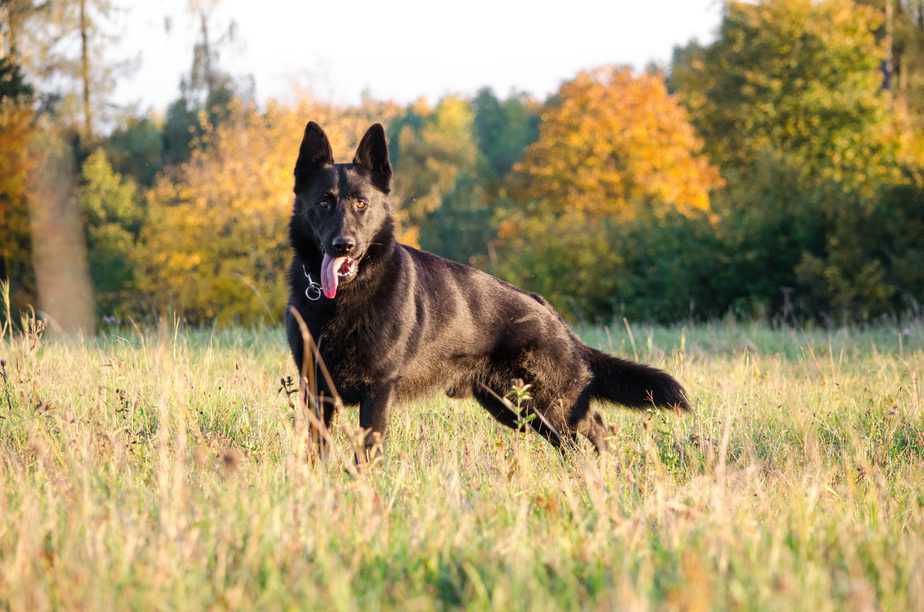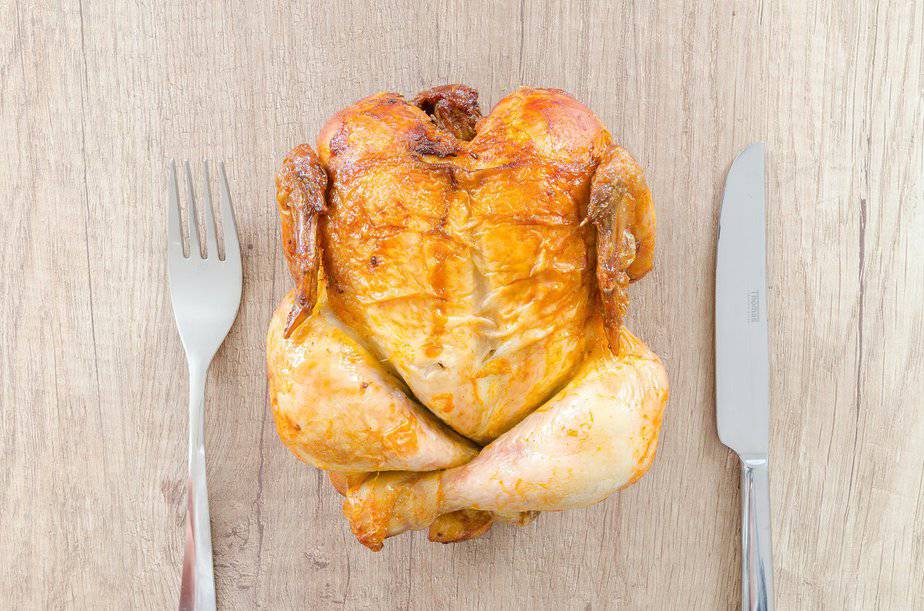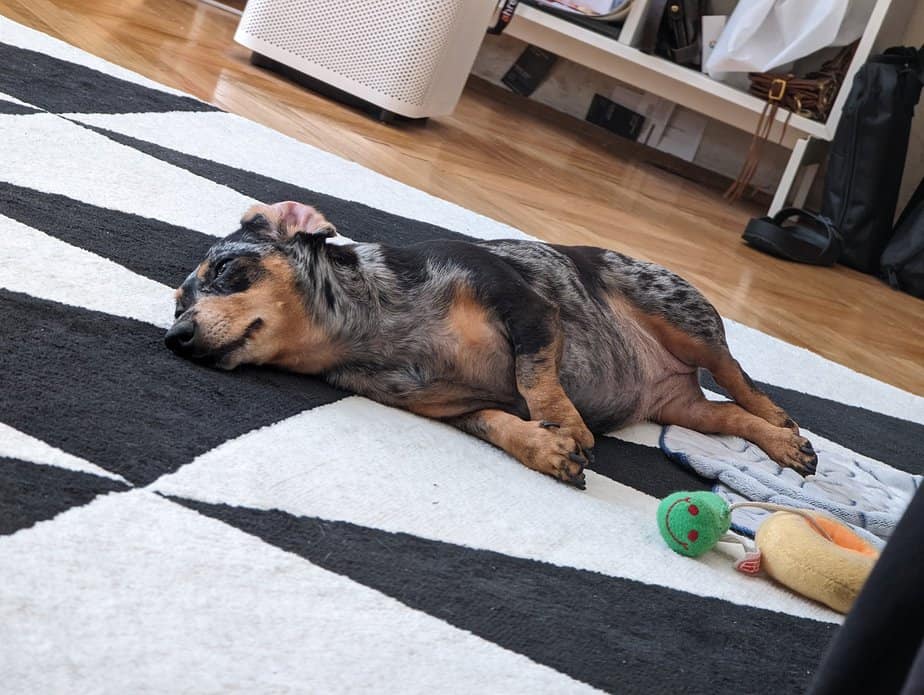What is canine hip dysplasia?
Canine hip dysplasia (CHD) is a developmental disease of the bones in which the head of the thigh bone poorly fits the hip socket, causing damage to the cartilage, gradual destruction of the joint, pain and swelling. This disease should not be confused with hip arthritis. Rather, it is the most common cause of arthritis in the hips.
What Causes Hip Dysplasia?
There is no “conclusive proof” of the cause of hip dysplasia but it’s either genetic or environmental. The most common theory is that it’s a genetic disorder.
- Genetic: The puppy is born with the problem
- Environmental: The puppy is too heavy resulting in excessive growth and/or over or under exercising a puppy during its growth phase resulting in developmental problems.
If your dog has hip dysplasia, you need to deal with it. The problem will not go away on its own.
When Does a Dog Get Hip Dysplasia?
If you subscribe to the theory that it is genetic, dogs are born with it. Dogs with severe hip dysplasia often show symptoms as puppies. Most breeders have their breeding dogs’ hips rated by the Orthopedic Foundation for Animals (OFA) or Pennsylvania Hip Improvement Program (Penn-HIP), or various other international orthopedic groups. Sometimes, the hip dysplasia does not cause pain for the dog, so they do not show signs of it until they develop arthritis in their hip joints. Some dogs that are not as severe can live out their entire lives with few, if any symptoms.
What are the Symptoms of Hip Dysplasia?

The Most Common Symptoms of Hip Dysplasia are:
- limping
- bunny hopping when running
- difficulty in the back legs when getting up
- Sitting like a frog
- Not trying to jump on furniture
Not Sure? Here are More Details
- Bunny Hopping: using both hind legs together to hop when running or going up stairs.
- Side Sit or frog sit: look at your dog dog sits, if its legs are not positioned bent and close to the body, that’s a symptom.
- Sway walk or loose walk: if your dog is walking and its backend sways back and forth, it means that the hips are loose.
- Unusual Laying Position: Legs are straight out and off to the side when the dog is laying on its stomach or legs are straight out behind the dog. (All dogs lay with their legs behind them on occasion, many dogs with hip dysplasia lay like this all the time.)
- Limping: The dog may favor one hind leg or the other, and may alternate legs that it is favoring.
- Quiet Puppy: puppies in pain are less rambunctious.
- Dog Doesn’t Jump: Not only do they not jump on you, they seem to pull themselves up by their front end onto furniture as opposed to jumping up.
- Underdeveloped hindquarters and overdeveloped Chest: This is caused by the failure to use the hind legs normally and jump. The dog also may actually be shifting weight forward.

Diagnosing Hip Dysplasia
The only way to diagnose hip dysplasia is with x-rays. Some dogs with seemingly mild hip dysplasia are in a lot of pain, while other dogs with apparent severe hip dysplasia do not display symptoms.
How does one know if a dog has hip dysplasia?
Canine hip dysplasia is a genetic issue that starts to appear around 4 to 12 months. If your dog has hip dysplasia, do not breed your animal please. If your dog seems to have a few of the symptoms listed above, schedule a call with your vet.
How does a vet confirm if a dog has hip dysplasia?
Diagnosis of the disease is done through physical examinations and x-rays. X-rays help in assessing how bad the condition is and how it progresses in time. These are the two techniques for taking x-rays:
- hip-extended ventrodorsal view x-ray provides a frontal view of the pelvis and hip-joints and best assesses the degree of severity of arthritis present.
- PennHIP radiography technique is used to detect hip looseness. This process is only for dogs 4 months and up.
What Can Be Done for My Dog?
First, you need to get a diagnosis by having X-rays done at your vet’s. Once that is done, you will be referred to an orthopedic surgeon. The surgeon will recommend various surgical options for your dog or discuss other treatment alternatives. They will provide the details of each surgical option. Some people are able to treat their dog with nutritional supplements and avoid surgery.
Surgical Options:

Surgery is approached in two different ways when dealing with hip dysplasia. Prophylactic surgery is done to prevent the progression of arthritis while therapeutic surgery aims to treat already arthritic hips.
Juvenile Pubic Symphysiodesis (JPS)
This surgery is performed on puppies under 20 weeks of age, generally when the puppy is neutered or spayed. It’s a great preventive surgery because it alters pelvic growth.
Dorsal Acetabular Rim (DAR)
This surgery consists of bone grafts being taken from other areas of the pelvis to build up the rim on the hip socket (cup). The idea is for the femoral head to have a deeper socket to fit into. .
Triple Pelvic Osteotomy (TPO)
This surgery involves cutting the bone around the hip socket and repositioning the socket for a better fit with the femoral head. The bones are plated back together so they heal in the correct alignment. This is reserved for puppies that haven’t finished growing.
Total Hip Replacement (THR)
This surgery is similar to a human hip replacement. A new cup is usually attached to the hip bone, and the femoral head is cut off the leg bone and an implant is inserted into the leg bone. This is an option for larger, mature dogs.
Femoral Head & Neck Ostectomy (FHO)
This surgery consists of removing the femoral head of the leg bone to eliminate the pain of hip dysplasia. The dog’s body will then develop scar tissue to create an artificial hip joint. It is a common option for smaller dogs.
Non-Surgical Management Options
Surgery is often a last resort. There are non-surgical options available: supplements, acupuncture, chiropractic care, exercise and weight management. There are also drugs that relieve pain and inflammation like: Rimadyl, Ectogesic and Deramaxx. Weight loss programs and physical therapy can also alleviate some of the pain.
Canine hip dysplasia ranges from mild to moderate. In mild cases, the space between the joints is greater than normal and the ball at the top of the hip bone is part way out of its socket. Fortunately, in mild cases, there are no associated arthritic changes in the joint. In moderate canine hip dysplasia, bone spurs begin to develop, and arthritic changes start to happen. In severe hip dysplasia, there is definite arthritis. This means that the condition is irreversible.
Tips To Prevent Canine Hip Dysplasia
- Do not feed a growing puppy a diet too high in calories. Too much weight can be a burden on the joints. If a dog is genetically predisposed to hip dysplasia, this can delay the beginning of symptoms and reduce the chance of it becoming severe.
- Careful about puppy exercises: jumping up and down from heights, and standing on their back legs, such as when they stand against a fence or window to look over it, can aggravate the joints whilst they are growing quickly.
- Go with a good breeder: if a parent has hip dysplasia, the risk is doubled for the litter. The pedigrees of dogs can be checked to see whether they have been certified as normal by the Orthopedic Foundation For Animals (OFA) in the US.
It is Common in Some Large Breeds

Large breed dogs have a greater chance of developing hip dysplasia. At risk breeds include rottweilers, german shepherds, golden retrievers, dalmations, and bloodhounds. The symptoms and signs of hip dysplasia vary, although the most common include crippling or the inability to walk properly. Sometimes, this disease can get better once the dog gets older though, due to the joints stabilizing, the inflammation going down, and the muscles in the hips getting stronger and more mature. Keep in mind however, dogs like Golden Retrievers, who have hip dysplasia when they are younger will more than likely develop arthritis when they get older.
There are certain drugs that your vet can prescribe to your dog to help control weight and alleviate the pain. Some dogs that have hip dysplasia won’t begin to show any signs until years later. Although your dog may be active and healthy for most of his puppy years, dysplasia can slow everything down and make your dog look as if he is old and is suffering from arthritis.





1 thought on “Hip Displasia and Dogs”
Excelente explanation ! Thank so much -Orlando Fl 🇺🇸 Luciana